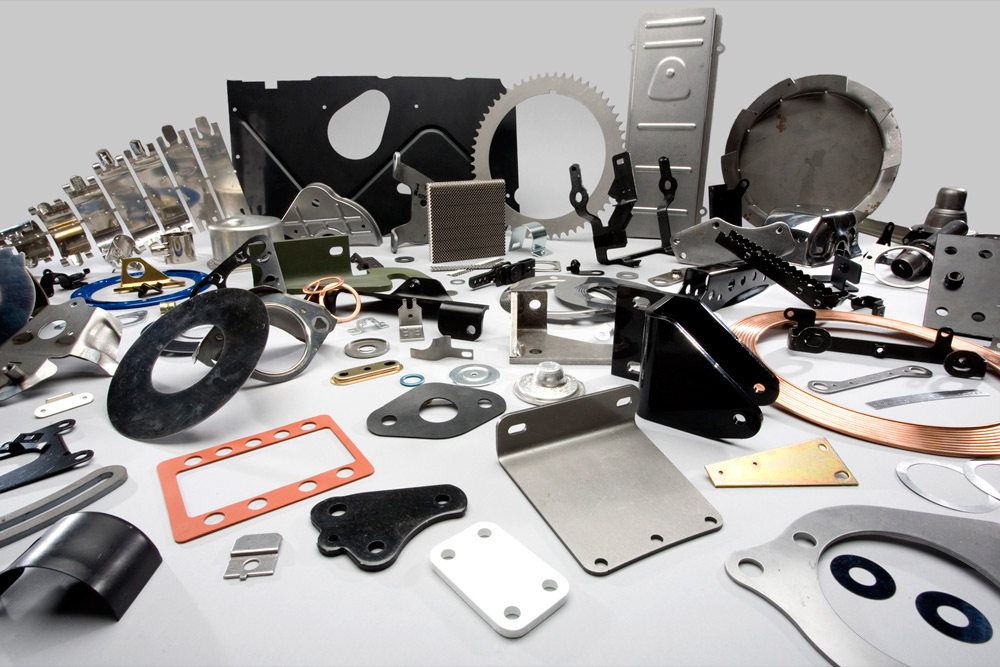Metal Marking Technologies: Elevating Manufacturing Processes for Superior Results
In the world of manufacturing processes, metal marking has actually long been a cornerstone method for generating a range of accuracy parts. However, with the ruthless march of technical development, the landscape of metal marking is undergoing a considerable improvement. Developments in this area are not only enhancing the effectiveness and high quality of manufacturing yet are likewise leading the means for new possibilities that were previously beyond reach. As the sector embraces these advanced advancements, a redefinition of what is attainable in production is underway, encouraging remarkable outcomes and establishing brand-new criteria for quality in the area.
Advancement of Metal Marking Methods

Additionally, developments in product science have brought about the development of high-strength alloys that can now be effortlessly stamped into complex shapes, dealing with a broader variety of industrial applications. The combination of robotics and expert system has better maximized the stamping process by improving speed and accuracy while reducing the threat of human error.

Impact of Advanced Products
Have innovative materials changed steel marking procedures significantly in the manufacturing sector? By using materials such as high-strength alloys, advanced compounds, and cutting-edge finishings, steel marking processes can currently generate parts that are lighter, stronger, and a lot more sturdy than ever before.
These innovative materials offer remarkable mechanical residential properties, deterioration resistance, and thermal stability, allowing producers to fulfill the demands of modern industries such as aerospace, vehicle, and electronics. Additionally, using innovative products in steel stamping has assisted in the production of complicated geometries and elaborate designs that were formerly unattainable through standard techniques.
Furthermore, the application of advanced materials has resulted in decreased product waste, reduced production costs, and shorter preparations, making steel stamping processes extra economical and sustainable. As technology remains to advance, the impact of advanced materials on steel stamping procedures is expected to drive further development and enhance the competitiveness of manufacturers in the international market.
Automation in Metal Stamping
The evolution of metal marking processes driven by the assimilation of sophisticated products has actually set the phase for substantial advancements in automation within the manufacturing sector. Automation in steel stamping has transformed manufacturing processes, improving effectiveness, accuracy, and general output high quality. Through the usage of robotics, sensing units, and computer-controlled systems, tasks that were time-consuming and when manual can currently be performed with unrivaled rate and precision.
Automation in metal stamping not just accelerates production rates but additionally ensures uniformity in the manufacturing procedure. By decreasing human treatment, the risk of errors is considerably lowered, causing greater levels of item uniformity and dependability. Furthermore, automation enables suppliers to undertake complex marking jobs that would be not practical or challenging to attain by hand.
Furthermore, automation in steel stamping contributes to a more secure working environment by decreasing the requirement for staff members to involve in unsafe or recurring jobs - Metal Stamping. This change towards automation not just enhances productivity yet additionally leads the method for the future of manufacturing, where modern technology plays a main role in driving functional excellence
Quality Assurance and Evaluation Equipments
With a focus on accuracy and dependability, top quality control and examination systems play an essential role in guaranteeing product quality in steel marking procedures. These systems are developed to keep track of every phase of production, from product evaluation to the end product, to ensure that all components satisfy the required standards. By applying sophisticated innovations such as optical evaluation systems, coordinate gauging machines (CMM), and automated gauging devices, producers can identify also the tiniest inconsistencies in measurements, surface high quality, and general stability of stamped parts.

Sustainability Practices in Metal Stamping
Building upon the foundation of accuracy and reliability established via quality control and evaluation systems, the integration of sustainable techniques in steel marking procedures is significantly coming to be a prime focus for producers seeking to decrease ecological effect and optimize source usage. Sustainability techniques in steel marking encompass a series of campaigns targeted at decreasing waste check out this site generation, energy usage, and greenhouse gas emissions throughout the production procedure.
One key facet of sustainability in metal marking is the fostering of green products and technologies that promote recyclability and waste decrease. By making use of recycled materials and implementing energy-efficient equipment, producers can lower their carbon footprint and add to a more sustainable production cycle. Furthermore, maximizing production processes to lessen material waste and power use not only benefits the environment however also causes set you back financial savings for services in the future.
Additionally, the implementation of sustainable practices in steel stamping can enhance brand name online reputation and interest ecologically aware customers. As sustainability remains to acquire significance in the production market, incorporating environmentally friendly campaigns into steel stamping processes is important for lasting success and competition in the market.
Verdict
In final thought, steel stamping strategies have considerably evolved over time, incorporating innovative products and automation to boost producing procedures. Quality assurance and assessment systems play a critical duty find more in making certain exceptional results, while sustainability techniques are progressively being executed to minimize environmental effect. These innovations in metal marking have changed the market, resulting in more lasting and efficient manufacturing approaches for various markets.
Metal stamping, as soon as a handbook and labor-intensive process, has actually changed into an extremely automated and advanced method of forming metal sheets into various forms and layouts.Have innovative here products changed steel marking processes dramatically in the manufacturing industry? By making use of materials such as high-strength alloys, progressed compounds, and ingenious layers, steel stamping procedures can currently produce components that are lighter, stronger, and extra sturdy than ever in the past.
The advancement of metal marking processes driven by the integration of innovative products has set the phase for considerable improvements in automation within the production sector.In verdict, steel marking methods have dramatically evolved over time, including sophisticated materials and automation to boost manufacturing procedures.